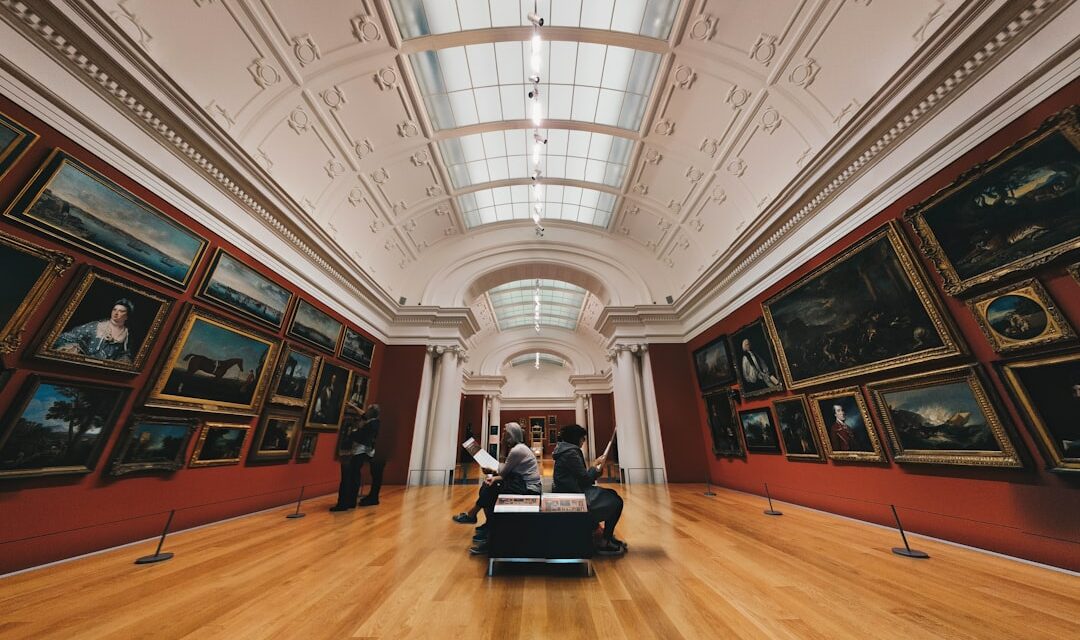Claude Monet, the esteemed French painter, was born on 14 November 1840 in Paris, France. He spent his formative years in Le Havre, a coastal town in Normandy. Monet exhibited an early aptitude for art and began sketching caricatures during his youth.
His mother encouraged his artistic pursuits, and at age 11, he enrolled in Le Havre secondary school of the arts. It was during his time at this institution that he encountered Eugène Boudin, a landscape painter who became his mentor and introduced him to en plein air painting. This early exposure to outdoor painting significantly influenced Monet’s artistic development.
Upon completing his studies at the secondary school of the arts, Monet relocated to Paris to further his artistic training. He matriculated at the Académie Suisse and subsequently studied at Charles Gleyre’s studio, where he formed acquaintances with fellow artists such as Pierre-Auguste Renoir, Frédéric Bazille, and Alfred Sisley. During this period, Monet began to cultivate his distinctive style and technique, which would later become closely associated with the Impressionist movement.
His early years and education established the groundwork for his future prominence as an innovative figure in the art world.
Summary
- Claude Monet was born in Paris, France in 1840 and grew up in Le Havre, where he developed a love for drawing and painting.
- Monet was a key figure in the Impressionist movement, known for his use of light and colour to capture the essence of a scene rather than its details.
- His style involved using short, thick brushstrokes to capture the essence of the subject rather than its details, and he often painted en plein air, or outdoors.
- Some of Monet’s most famous works include “Impression, Sunrise”, “Water Lilies”, and “Rouen Cathedral, West Facade, Sunlight”.
- Monet married his first wife, Camille Doncieux, and later in life, he married Alice Hoschedé, who had been his companion after Camille’s death. He had eight children in total.
- In his later years, Monet continued to paint and travel, and he left a lasting legacy on the art world, influencing generations of artists to come.
- Monet’s influence on the artistic community can still be seen today, as his work continues to inspire and captivate audiences around the world.
Impressionist Movement
The Birth of a Movement
The term “Impressionism” was coined from Monet’s painting “Impression, Sunrise,” which was exhibited in 1874 and caused a stir among critics and the public. The painting depicted the port of Le Havre at sunrise, with loose brushwork and a focus on capturing the effects of light and colour. This marked the beginning of the Impressionist movement, which aimed to break away from the constraints of academic art and embrace a more experimental and innovative approach to painting.
Monet’s Contributions
Monet’s contributions to the movement were significant, as he continued to explore new ways of representing light and colour in his work, paving the way for future generations of artists.
A Lasting Legacy
The Impressionist movement’s emphasis on capturing the fleeting effects of light and atmosphere has had a lasting impact on the art world, influencing countless artists and styles that followed.
Style and Techniques

Monet’s style is characterised by his use of broken brushstrokes and a vibrant colour palette to capture the effects of light and atmosphere. He often painted en plein air, allowing him to observe and capture the changing qualities of natural light in his landscapes and seascapes. His technique involved layering multiple thin glazes of paint to create a sense of depth and luminosity in his work.
This approach allowed him to achieve a sense of spontaneity and movement in his paintings, as seen in his famous series such as “Water Lilies” and “Haystacks.” One of Monet’s most distinctive techniques was his use of complementary colours to create vibrant and harmonious compositions. He often juxtaposed warm and cool tones to convey the shifting effects of light and shadow, creating a sense of dynamism and energy in his paintings. His mastery of colour and light set him apart as a leading figure in the Impressionist movement, influencing generations of artists to come.
Monet’s innovative style and techniques continue to inspire artists and art enthusiasts around the world.
Famous Works
Monet’s body of work includes a wide range of paintings, but some of his most famous works are his series paintings, which depict the same subject under different lighting conditions. One of his most iconic series is “Water Lilies,” which he began painting in the late 1890s and continued until his death in 1926. These large-scale paintings depict his water garden at Giverny, capturing the reflections and ripples on the surface of the water with a sense of ethereal beauty.
Another famous series by Monet is “Haystacks,” which he painted in the 1890s. These paintings depict stacks of hay in various lighting conditions, showcasing his mastery of capturing the effects of light and atmosphere. The series is a testament to Monet’s dedication to exploring the nuances of colour and light in nature, creating a sense of timelessness and tranquillity in his work.
In addition to his series paintings, Monet also produced iconic works such as “Impression, Sunrise,” “The Artist’s Garden at Giverny,” and “Rouen Cathedral Series.” These paintings exemplify his innovative approach to capturing the fleeting effects of light and atmosphere, cementing his legacy as one of the most influential artists of the 19th century.
Personal Life and Relationships
Monet’s personal life was marked by both triumphs and challenges. He married Camille Doncieux in 1870, and they had two sons together, Jean and Michel. However, Camille tragically passed away in 1879, leaving Monet devastated.
Despite this loss, he continued to pursue his artistic career with unwavering dedication. In 1892, Monet married Alice Hoschedé, who had been a close friend and supporter during a difficult period in his life. Together, they blended their families and created a warm and nurturing home at Giverny, where Monet would later establish his famous water garden.
Alice played a crucial role in managing Monet’s career and supporting him through various challenges, allowing him to focus on his artistic pursuits. Monet’s relationships with fellow artists such as Renoir, Degas, and Pissarro were also significant in shaping his artistic development. They formed a close-knit group known as the Impressionists, who shared a common vision for breaking away from academic conventions and embracing new approaches to painting.
Their camaraderie and mutual support provided Monet with the encouragement and inspiration he needed to push boundaries and innovate within the art world.
Later Years and Legacy

A Legacy of Innovation
His commitment to pushing artistic boundaries and exploring new ways of representing light and colour solidified his legacy as a pioneering figure in the art world.
Enduring Influence
Monet’s impact on the art world continues to be felt today, as his innovative approach to painting continues to inspire artists across generations. His influence can be seen in various artistic movements, from Post-Impressionism to Abstract Expressionism, as artists have drawn inspiration from his use of colour, light, and brushwork.
A Lasting Tribute
His legacy also lives on through the Fondation Claude Monet, which preserves his home and gardens at Giverny for future generations to experience.
Influence on Artistic Community
Monet’s influence on the artistic community extends far beyond his lifetime, as his innovative approach to painting continues to inspire artists around the world. His emphasis on capturing the effects of light and atmosphere has had a profound impact on subsequent generations of artists, who have sought to emulate his mastery of colour and brushwork. The Impressionist movement that Monet helped pioneer has left an indelible mark on art history, challenging traditional notions of representation and paving the way for new modes of artistic expression.
His dedication to pushing boundaries and exploring new ways of seeing has resonated with artists across diverse genres and styles, demonstrating the enduring relevance of his artistic vision. Monet’s legacy as a pioneering figure in the art world is evident in the countless exhibitions dedicated to his work, as well as the ongoing scholarly research that seeks to unravel the complexities of his artistic practice. His impact on the artistic community is a testament to his enduring influence as one of the most celebrated artists in history.
If you are interested in learning more about the art movement that followed Impressionism, you should check out the article on Post-Impressionism. This article provides a comprehensive overview of the artists and techniques that defined this period, including the work of Pierre-Auguste Renoir. You can find the article here.
FAQs
Who was Pierre-Auguste Renoir?
Pierre-Auguste Renoir was a French artist who was a leading painter in the development of the Impressionist style. He was known for his celebration of beauty and feminine sensuality in his paintings.
When and where was Pierre-Auguste Renoir born?
Renoir was born on February 25, 1841, in Limoges, Haute-Vienne, France.
What is Pierre-Auguste Renoir best known for?
Renoir is best known for his vibrant and sensual paintings of everyday life, particularly of women and children. He was a key figure in the Impressionist movement and his work is celebrated for its use of light and colour.
What are some of Pierre-Auguste Renoir’s most famous works?
Some of Renoir’s most famous works include “Luncheon of the Boating Party,” “Dance at Le Moulin de la Galette,” and “Bal du moulin de la Galette.” These paintings are celebrated for their lively and joyful depictions of social scenes.
What influenced Pierre-Auguste Renoir’s art?
Renoir was influenced by the works of earlier artists such as Fragonard and Boucher, as well as the Impressionist movement. He was also inspired by the beauty of nature and the human form, which is evident in his paintings.
What was Pierre-Auguste Renoir’s artistic style?
Renoir’s artistic style is often described as Impressionist, characterized by his use of loose brushwork, vibrant colours, and an emphasis on capturing the effects of light. His paintings often depicted scenes of leisure and everyday life, with a focus on the beauty of the human form.




